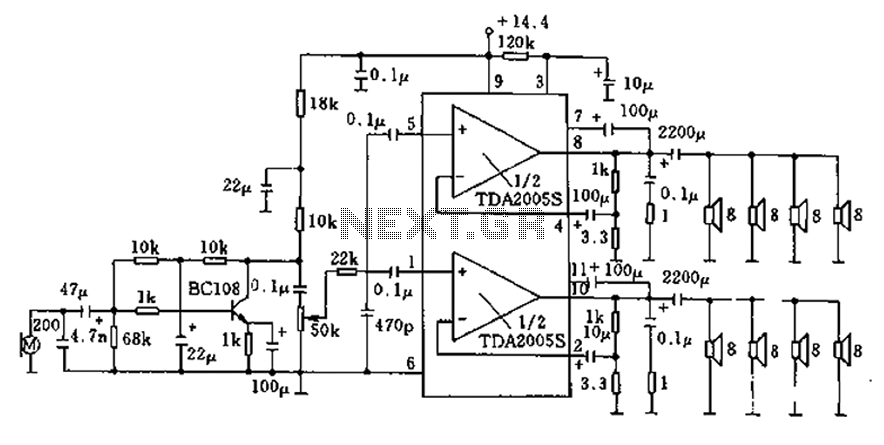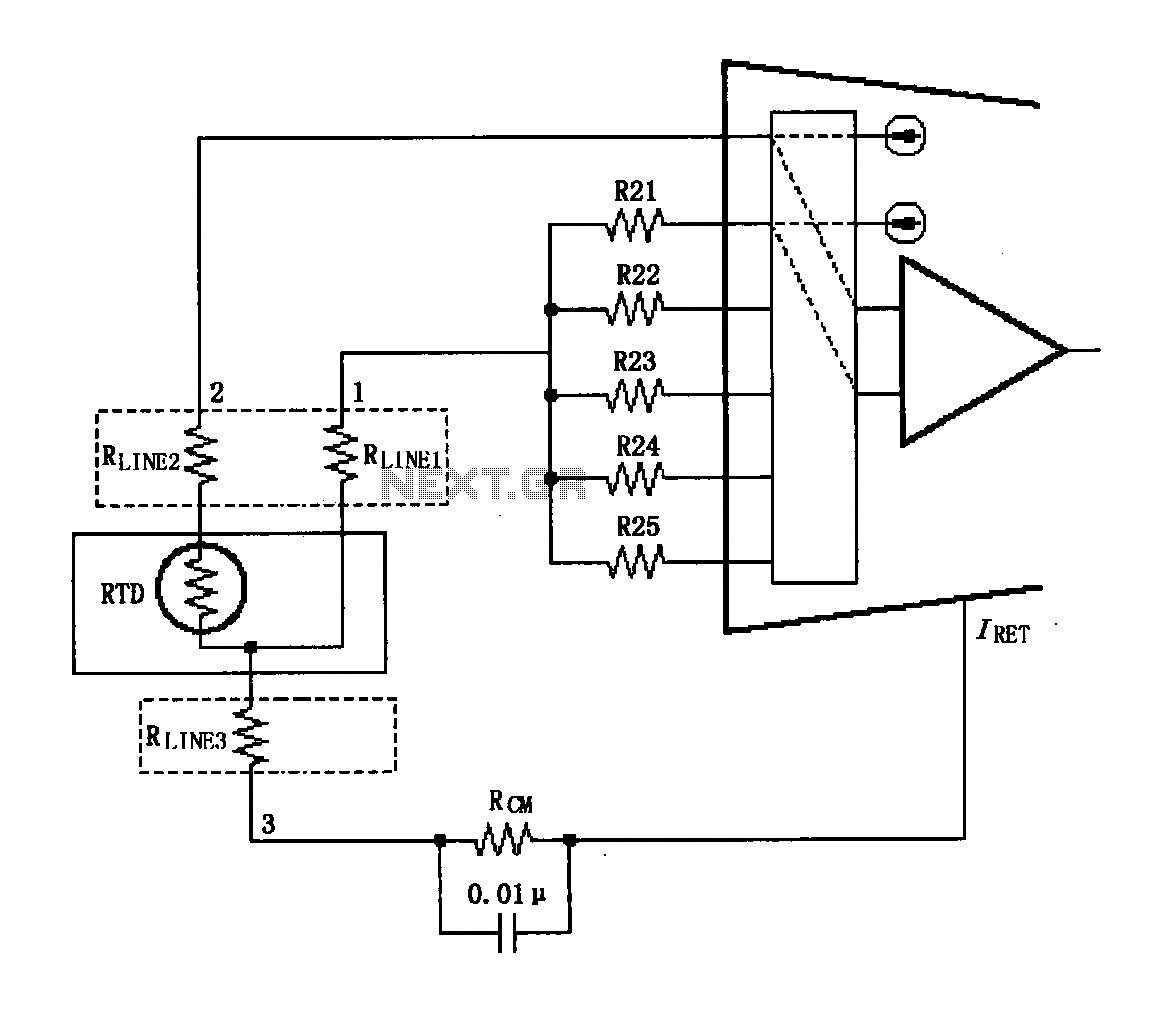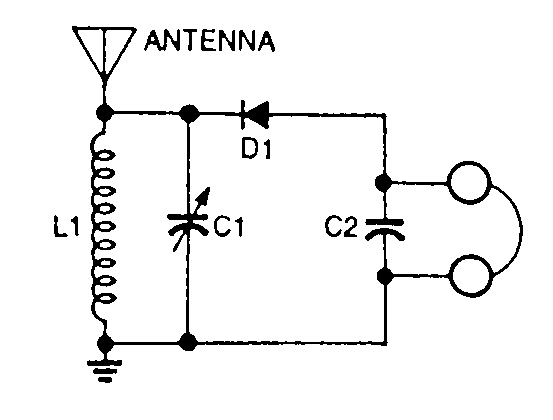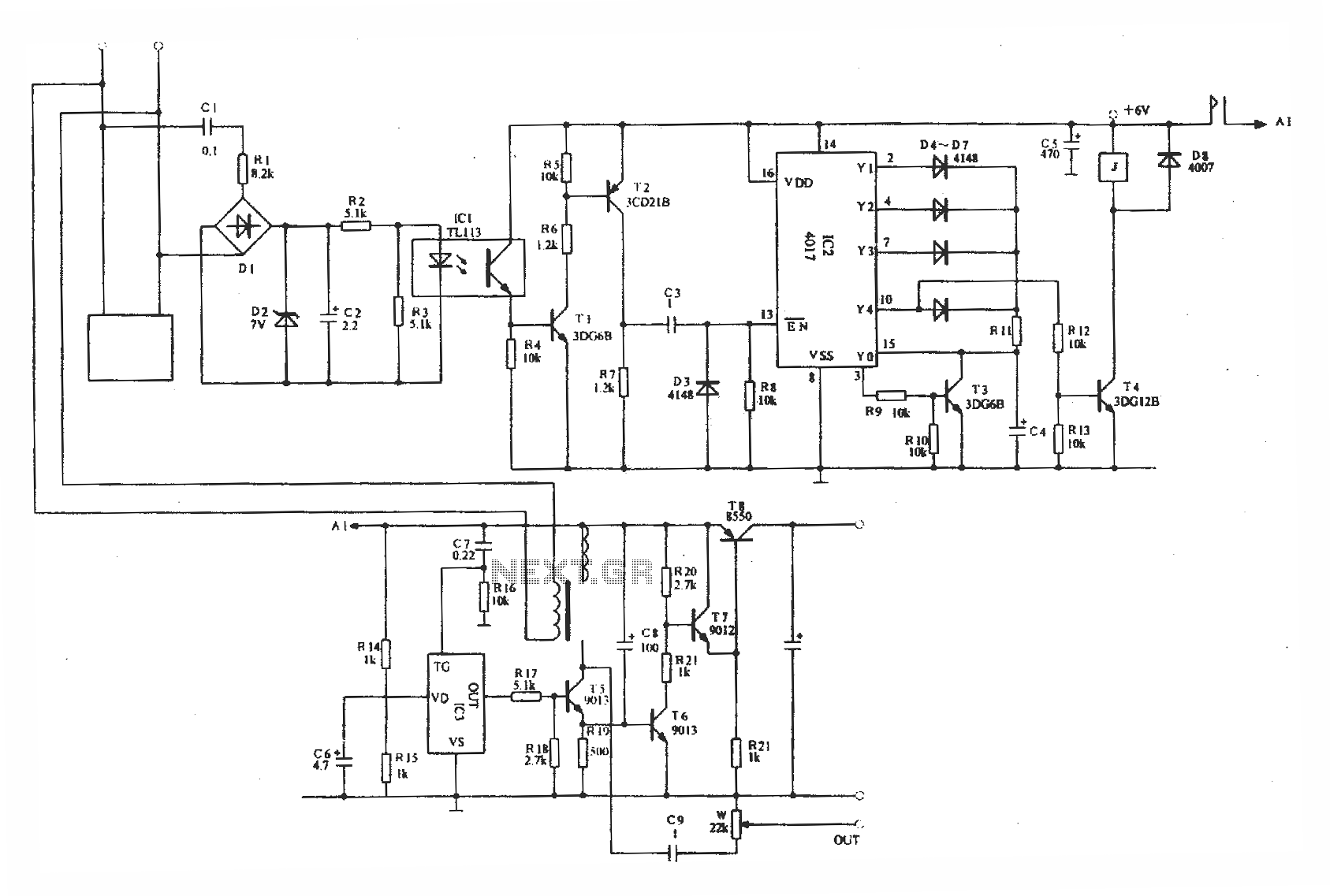
20W bus circuit radio and megaphone

20W bus radio and megaphone circuit utilizing the TDA2005S double low-frequency power amplifier integrated circuit design. The front end can be connected to either a microphone input or a low-frequency radio output voltage amplification stage. Each TDA2005S provides 10W output power and can support four speakers. With two outputs, it can accommodate eight speakers, allowing for distribution in different areas of the vehicle, achieving a total output power of up to 20W.
The circuit design for the 20W bus radio and megaphone system is centered around the TDA2005S integrated circuit, which serves as a dual low-frequency power amplifier. This IC is specifically designed to drive speakers in automotive applications, providing robust performance in both radio and megaphone configurations.
The front end of the circuit can be configured to accept signals from either a microphone or a low-frequency radio source. When utilizing a microphone, the circuit amplifies the audio input, ensuring clear sound reproduction for announcements or communications. In contrast, when connected to a radio output, the circuit amplifies the audio signal to drive the speakers effectively.
Each TDA2005S amplifier stage is capable of delivering 10W of output power, making it suitable for driving multiple speakers. The design allows for the connection of up to four speakers per amplifier, with the option to use two amplifiers in parallel to support a total of eight speakers. This configuration enables sound distribution across different sections of the vehicle, enhancing the auditory experience for passengers.
The total output power of the system can reach 20W, providing sufficient volume levels for both music playback and voice announcements. The circuit may include additional components such as capacitors for coupling and decoupling, resistors for biasing, and protection diodes to safeguard against voltage spikes. Proper thermal management and power supply considerations are also essential to ensure reliable operation under varying load conditions.
Overall, the TDA2005S-based bus radio and megaphone circuit is a versatile solution for enhancing audio output in vehicles, combining functionality with ease of integration and installation.20W bus radio and megaphone circuit TDA2005S double low frequency power amplifier integrated circuit design, the front end can be connected to the microphone input or low-frequ ency radio output voltage amplification stage, each TDA200S 10W output power, can take four speakers. Two outputs with eight speakers, can be divided in different parts of the car, the total output power of up to 20W.
The circuit design for the 20W bus radio and megaphone system is centered around the TDA2005S integrated circuit, which serves as a dual low-frequency power amplifier. This IC is specifically designed to drive speakers in automotive applications, providing robust performance in both radio and megaphone configurations.
The front end of the circuit can be configured to accept signals from either a microphone or a low-frequency radio source. When utilizing a microphone, the circuit amplifies the audio input, ensuring clear sound reproduction for announcements or communications. In contrast, when connected to a radio output, the circuit amplifies the audio signal to drive the speakers effectively.
Each TDA2005S amplifier stage is capable of delivering 10W of output power, making it suitable for driving multiple speakers. The design allows for the connection of up to four speakers per amplifier, with the option to use two amplifiers in parallel to support a total of eight speakers. This configuration enables sound distribution across different sections of the vehicle, enhancing the auditory experience for passengers.
The total output power of the system can reach 20W, providing sufficient volume levels for both music playback and voice announcements. The circuit may include additional components such as capacitors for coupling and decoupling, resistors for biasing, and protection diodes to safeguard against voltage spikes. Proper thermal management and power supply considerations are also essential to ensure reliable operation under varying load conditions.
Overall, the TDA2005S-based bus radio and megaphone circuit is a versatile solution for enhancing audio output in vehicles, combining functionality with ease of integration and installation.20W bus radio and megaphone circuit TDA2005S double low frequency power amplifier integrated circuit design, the front end can be connected to the microphone input or low-frequ ency radio output voltage amplification stage, each TDA200S 10W output power, can take four speakers. Two outputs with eight speakers, can be divided in different parts of the car, the total output power of up to 20W.




